Hearing Aids & Accessories
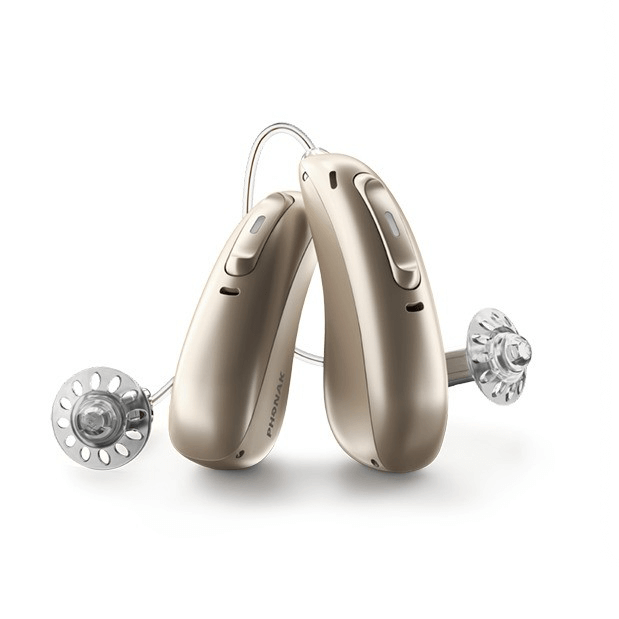
What is a hearing aid?
A hearing aid is a small electronic device that you wear in or behind your ear. It is a device designed to help utilize the auditory system to its fullest. Essentially the function of a hearing aid is to make everything louder. When one loses their hearing, they lose their ability to detect soft sounds. The hearing aid just makes these soft sounds loud enough to be audible. It makes some sounds louder so that a person with hearing loss can listen, communicate, and participate more fully in daily activities. A hearing aid can help people hear more in both quiet and noisy situations. However, only about one out of five people who would benefit from a hearing aid actually uses one.
A hearing aid has three basic parts
A microphone, amplifier, and speaker. The hearing aid receives sound through a microphone, which converts the sound waves to electrical signals and sends them to an amplifier. The amplifier increases the power of the signals and then sends them to the ear through a speaker.
There is not a hearing aid that exists today that will "cut out" background sounds completely. However, utilizing the latest technology available we are able to maximize your hearing in difficult listening situations.
When you decide to purchase hearing aids, the audiologist will take impressions (or molds) of your ears, as the hearing aids are custom built to fit only your ears. The impression is then sent to the hearing aid manufacturer who will build the hearing aid.

How can hearing aids help?
Hearing aids are primarily useful in improving the hearing and speech comprehension of people who have hearing loss that results from damage to the small sensory cells in the inner ear, called hair cells. This type of hearing loss is called sensorineural hearing loss. The damage can occur as a result of disease, aging, or injury from noise or certain medicines.
A hearing aid magnifies sound vibrations entering the ear. Surviving hair cells detect the larger vibrations and convert them into neural signals that are passed along to the brain. The greater the damage to a person’s hair cells, the more severe the hearing loss, and the greater the hearing aid amplification needed to make up the difference. However, there are practical limits to the amount of amplification a hearing aid can provide. In addition, if the inner ear is too damaged, even large vibrations will not be converted into neural signals. In this situation, a hearing aid would be ineffective.
Are there different styles of hearing aids?
There are three basic styles of hearing aids. The styles differ by size, their placement on or inside the ear, and the degree to which they amplify sound.
Adjusting To Your Hearing Aid
It will probably take you a while to get used to your new hearing aid. During this time, it is important to keep in mind that your aid will not make your hearing "normal" again, but it will make sounds clearer, enabling you to participate in conversations and hear sounds that you may have missed before.
The first week is often the most trying period. You may here strange "new" sounds, like the hissing of a radiator, and you may be distracted by an array of background noises, such as the hum of a refrigerator or the sound of a knife on a dinner plate. Some everyday sounds, like rustling the newspaper or running water, will sound different. Your own voice may seem loud or strange to you. Your hearing aid should fit comfortably. Report any discomfort, pain, or irritation to your audiologist as soon as possible.
By the second week, you should be more comfortable wearing your aid, and better at identifying sounds. After the third week, you may get the feeling that your hearing is worse when you remove the aid, but this is a sign that you are getting accustomed to hearing again!
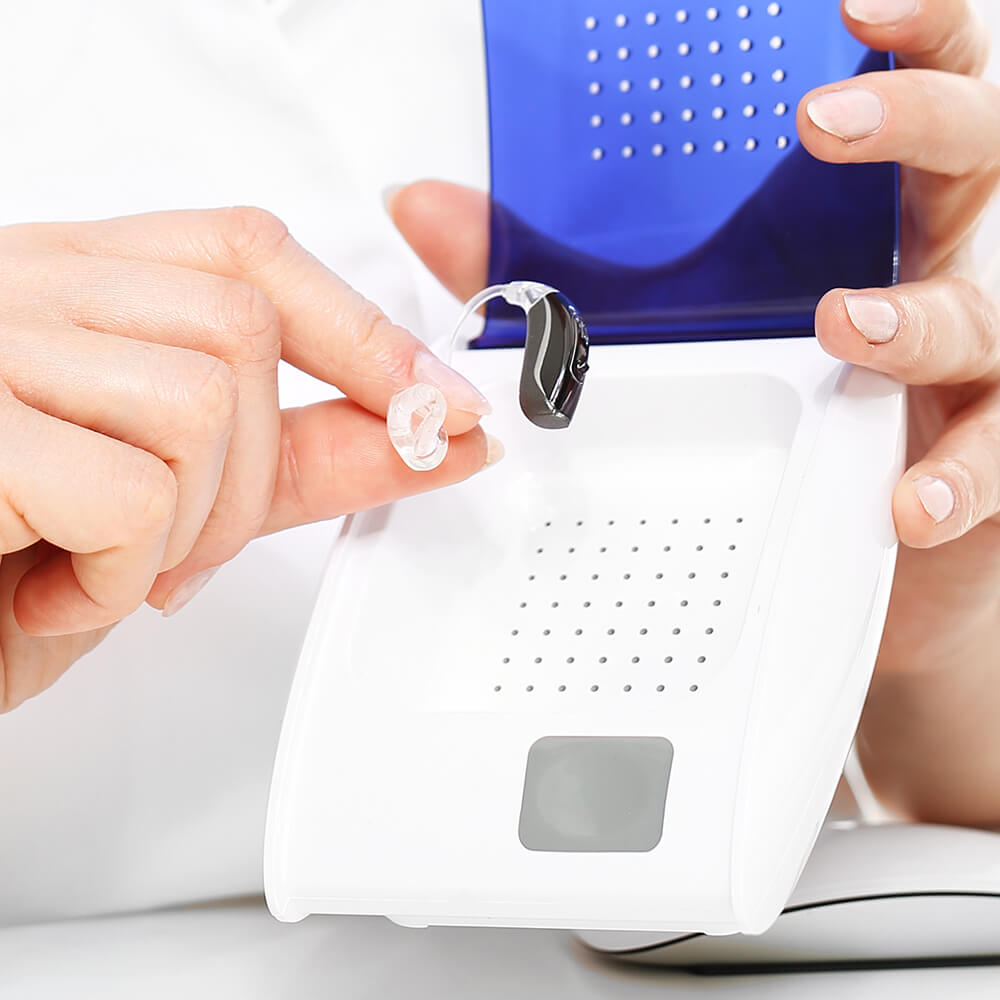
Care of your Hearing Aid
Avoid situations where your hearing aid could fall any distance on to a hard surface. Be seated or hold the aid over a table rather than over the floor when changing the batteries, performing maintenance, or inserting it into the ear.
Keep the hearing aid dry. Remove the aid before swimming or taking a shower. Always store the aid in a dry place and keep it away from sources of dampness. Never attempt to dry it in any type of oven or with a blow dryer. Do not leave your aid in a pocket of clothing to be laundered.
Keep the hearing aid away from excessive heat or direct sunlight. Never leave it on a radiator, near a stove, in a sunny window, in a car glove box, or any other hot place. Do not wear the aid when using a hair dryer or near a sunlamp or heat lamp.
Remove the hearing aid before applying hair spray. It may damage the microphone. If you are often in dusty environments (wood shop, outdoors, etc.), your hearing aid may require more frequent cleaning and maintenance.
Store your hearing aid out of reach of youngsters or pets. It should be stored in its case when not in use. Open the battery door when not wearing the aid to prevent excessive battery drain.
Do not attempt to repair your own hearing aid. Never attempt to open its case. Do not wash or lubricate any part of the aid.
Cleaning: Keep the ear mold and tubing free of obstruction. Clean with a damp cloth and remove any accumulated wax with the provided wax removal tool. Clean the case of the aid by wiping carefully with a dry cloth or tissue. See your audiologist or hearing aid specialist twice a year for cleaning and maintenance.
Hearing Aid Options
Phonak Paradise Series

Coming soon.
Phonak Marvel Series
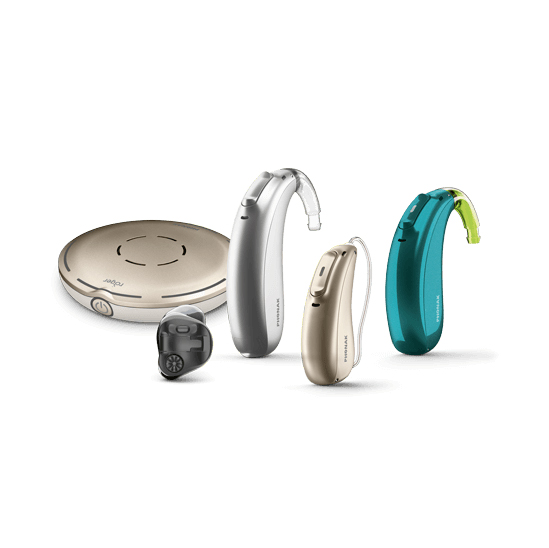
Marvel pushes the boundaries of hearing technology to create a solution that delivers excellent sound quality. It’s easy to use and features all the latest Phonak technology. Marvel connects directly to smartphones, TV and a variety of everyday electronics. Marvel also features RogerDirect which enables Roger microphones to stream directly to the hearing aids.*
Phonak Naída™ Marvel
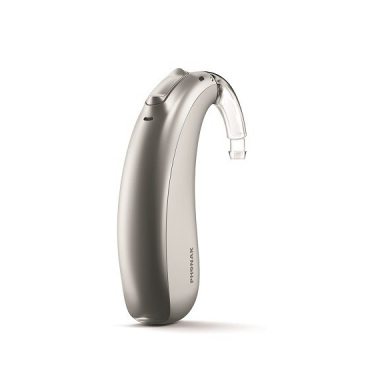
The hearing aid with powerful, rich sound featuring hands-free calls, Bluetooth® streaming and maximum reliability.
Enjoy better speech understanding in noise and over distance with Roger1, and less listening effort in noise2. Be amazed at how reliably your hearing aids deliver the power needed to manage your hearing loss.
Connect directly to either your iOS or Android smartphone or other Bluetooth® enabled devices. Enjoy hands-free calls, TV, music, e-books, podcasts and more. Naída is the most trusted power hearing aid3 with an IP68 rated water and dust resistance.
Virto Marvel Black
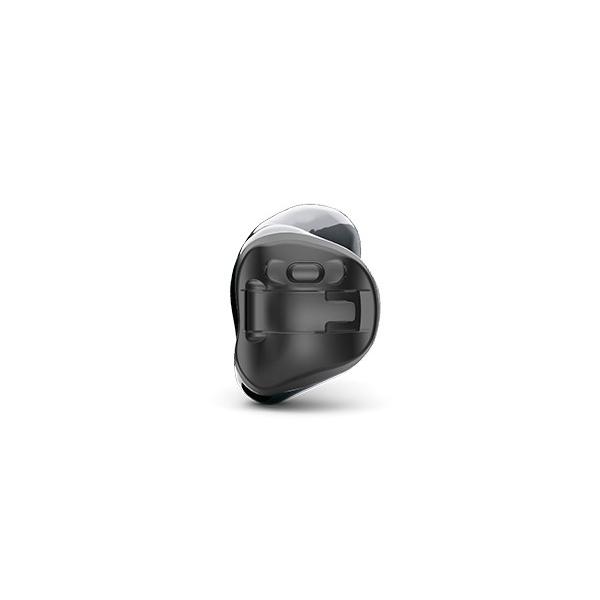
A hearing aid that's just like an earbud. Clear, rich, sound in a stylish black finish (other colors available). Connects to smartphones, TV and more. Hands-free calls, music streaming, Roger™ microphones, Smart apps Fine tune, adjust, personalize with Customized biometric calibration for your individual ear.
Phonak Bolero™ Marvel
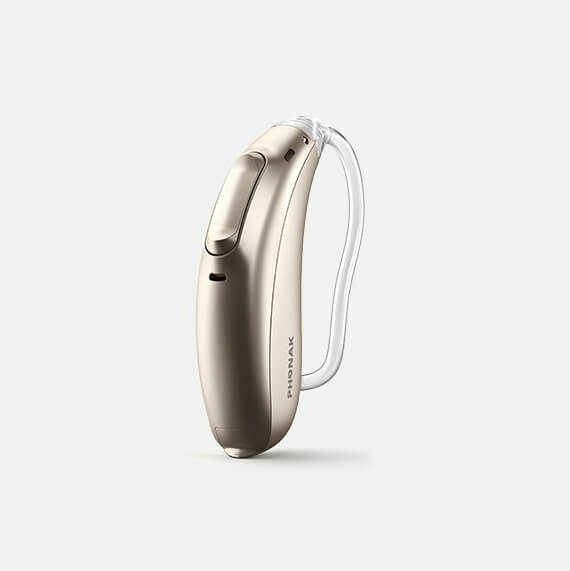
Phonak Bolero for mild to severe hearing loss combines maximum reliability and robustness with a clear, rich sound experience and multifunctionality.
Enjoy better speech understanding in noise¹, less listening effort² and be amazed at how well your hearing aids perform from the first fit and every time you wear them.
Phonak Bolero Marvel hearing aids connect directly to either your iOS or Android smartphone or other Bluetooth® enabled devices. Use them for hands-free calls, listening to TV, music, e-books, podcasts and so much more.
Available with powerful rechargeable technology, Marvel hearing aids are easy to use, quick to charge and offer a full day of hearing including streaming.
Phonak Sky Marvel
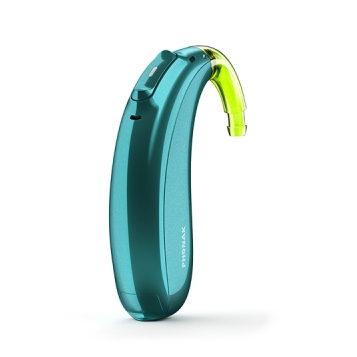
Combining world’s first technological innovations and child-specific designs to support children of all ages.
Close relationships are essential for children’s social, emotional and cognitive development1. Sky Marvel enables children to build strong bonds by offering clear rich sound and access to more words and conversations every day.
AutoSense Sky OS is the world’s first operating system built specifically for children and provides an optimal listening experience in situations like noisy classrooms and outdoor playgrounds.
Sky Marvel connects directly to smartphones and other Bluetooth® enabled devices, enabling children to easily enjoy speech, music, TV and much more.
This powerful rechargeable technology offers a full day of hearing including 10 hours of Roger or media streaming.
Tamperproof and designed to provide comfort, safety and robustness in all aspects of a child’s active life.
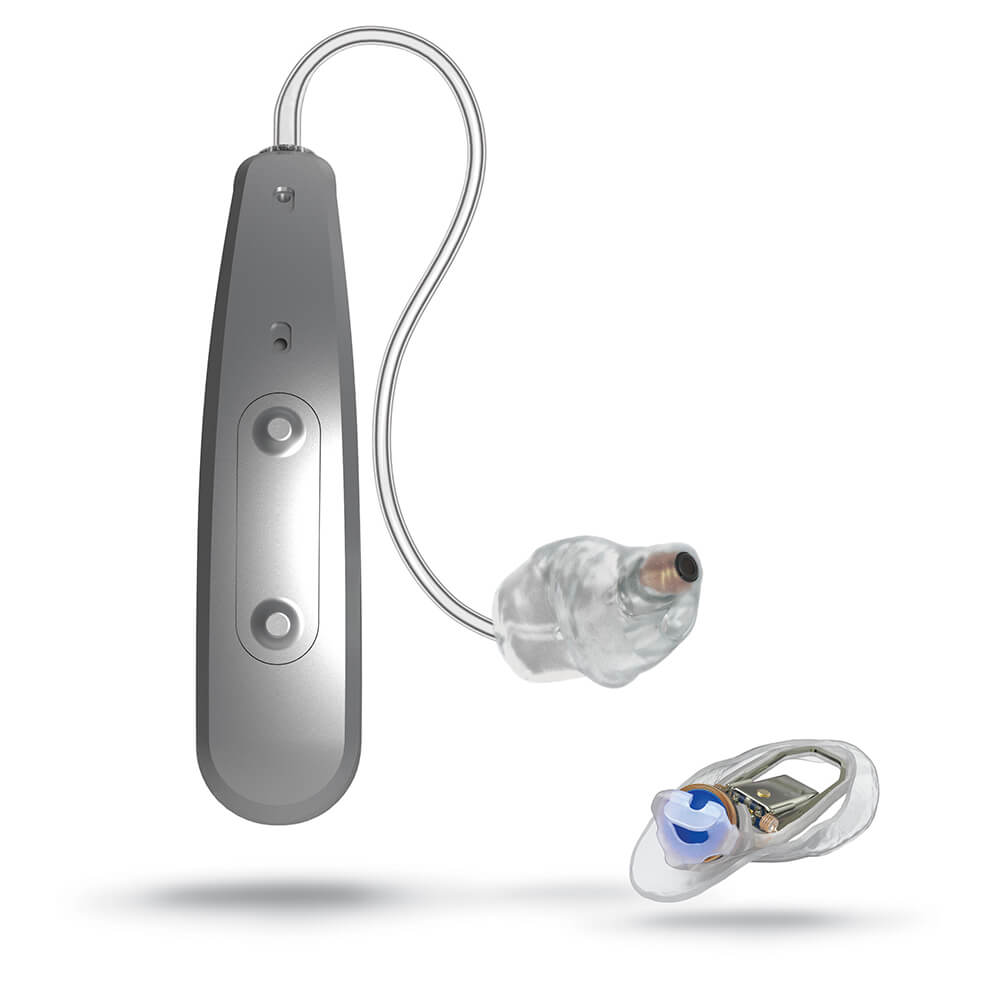
The Earlens® Contact Hearing Solution
We are proud to be a provider of Earlens, the world’s first and only hearing solution to directly vibrate the eardrum. Earlens delivers more complete sound than any acoustic hearing aid, and a bandwidth that is associated with more natural sound quality and better hearing in noise. InEarlens, a Processor worn behind the ear sends an audio signal through the Ear Tip to a custom Lens that rests directly on the eardrum. When the eardrum receives the signal, it gently vibrates the eardrum to activate the ear’s natural hearing system.
- Most complete sound: Earlens can provide meaningful amplification from 125 Hz all the way to 10 kHz, while conventional hearing aids have trouble amplifying outside of 550 Hz to 5.5 kHz. But research has shown that those lower and higher frequencies impact sound quality and speech understanding, especially in noisy environments.
- Premium care: Earlens is the only nonsurgical solution that combines the care of an ENT physician and audiologistor hearing health professional. With Earlens, you will receive the highest level of hearing healthcare.
- Advanced, custom technology: Each Earlens solution includes a custom Ear Tip and Lens to optimize comfort and fit based on an ear impression taken by your physician. After they are ready, your physician will place the Lens in your ear, and your audiologist will program Earlensto your unique hearing needs.
